-
 Bitcoin
Bitcoin $84,896.8354
0.49% -
 Ethereum
Ethereum $1,602.4356
0.92% -
 Tether USDt
Tether USDt $0.9999
0.02% -
 XRP
XRP $2.0718
0.32% -
 BNB
BNB $588.8930
-1.12% -
 Solana
Solana $138.0987
3.60% -
 USDC
USDC $1.0000
0.02% -
 Dogecoin
Dogecoin $0.1569
-0.04% -
 TRON
TRON $0.2412
-0.39% -
 Cardano
Cardano $0.6209
-0.06% -
 UNUS SED LEO
UNUS SED LEO $9.3114
3.07% -
 Chainlink
Chainlink $12.7499
1.47% -
 Avalanche
Avalanche $19.6967
4.01% -
 Stellar
Stellar $0.2447
1.35% -
 Toncoin
Toncoin $2.9511
-1.71% -
 Shiba Inu
Shiba Inu $0.0...01215
-0.19% -
 Hedera
Hedera $0.1650
0.21% -
 Sui
Sui $2.1303
0.65% -
 Bitcoin Cash
Bitcoin Cash $333.7715
-2.36% -
 Hyperliquid
Hyperliquid $17.8349
7.67% -
 Polkadot
Polkadot $3.7320
0.93% -
 Litecoin
Litecoin $75.2308
-1.48% -
 Bitget Token
Bitget Token $4.5072
2.35% -
 Dai
Dai $0.9999
-0.02% -
 Ethena USDe
Ethena USDe $0.9991
-0.01% -
 Pi
Pi $0.6467
4.30% -
 Monero
Monero $212.9652
-2.31% -
 Uniswap
Uniswap $5.2435
1.28% -
 Pepe
Pepe $0.0...07338
1.43% -
 OKB
OKB $50.5063
0.07%
What is a sidechain? How does it extend the functionality of blockchain?
Sidechains, independent blockchains pegged to a main chain, boost scalability and privacy while enabling experimentation with new features and consensus mechanisms; however, peg vulnerabilities and sidechain security remain key risks.
Mar 13, 2025 at 08:06 pm

Key Points:
- Sidechains are independent blockchains pegged to a main blockchain, offering enhanced functionality without compromising the main chain's security.
- Pegging mechanisms ensure asset transfer between the main chain and the sidechain, maintaining value equivalence.
- Sidechains enable scalability solutions, increased privacy, and the implementation of novel consensus mechanisms or smart contract functionalities.
- Different types of sidechains exist, each with unique architectural designs and security considerations.
- Risks associated with sidechains include peg vulnerabilities and the potential for compromised security on the sidechain itself.
What is a Sidechain? How Does it Extend the Functionality of Blockchain?
A sidechain is a separate blockchain that's cryptographically linked to a main blockchain, often referred to as the "parent" or "base" chain. This connection allows for the transfer of assets between the main chain and the sidechain, while maintaining a degree of independence. Think of it as a parallel highway branching off from a main thoroughfare. This independence allows developers to experiment with and implement features not possible or practical on the main blockchain without impacting its core functionality or security.
The key to a sidechain's operation lies in its pegging mechanism. This is the system that securely locks assets on the main chain and releases corresponding assets on the sidechain, and vice-versa. Different sidechains use different pegging methods, ranging from simple two-way peg systems to more complex multi-signature solutions, each with its own security implications. A well-designed pegging system is critical to maintaining the value equivalence between assets on both chains.
One of the most significant ways sidechains extend blockchain functionality is by addressing scalability limitations. Main blockchains, like Bitcoin or Ethereum, can become congested during periods of high transaction volume, leading to increased fees and slower confirmation times. Sidechains can handle a larger transaction load, thereby alleviating pressure on the main chain. This is achieved by processing transactions independently, only interacting with the main chain when assets need to be transferred.
Furthermore, sidechains offer opportunities for enhanced privacy. The main chain might prioritize transparency, while a sidechain could incorporate privacy-enhancing technologies like zero-knowledge proofs, allowing for confidential transactions without compromising the security of the main chain. This feature is particularly attractive for applications requiring sensitive data handling, such as financial transactions or supply chain management.
Beyond scalability and privacy, sidechains enable experimentation with novel consensus mechanisms. A main chain might utilize a well-established consensus like Proof-of-Work or Proof-of-Stake, but a sidechain could explore alternative mechanisms, such as Delegated Proof-of-Stake or even entirely new approaches. This allows developers to test the effectiveness and security of these alternatives in a controlled environment without risking the stability of the main chain.
Sidechains also provide a sandbox for implementing new smart contract functionalities or exploring different programming languages. Developers can create and test new smart contracts on a sidechain before deploying them to the main chain, reducing the risk of bugs or vulnerabilities impacting the core blockchain. This iterative development approach is crucial for ensuring the robustness and security of decentralized applications (dApps).
Different types of sidechains exist, each with its own design and security considerations. These include:
- Two-way pegged sidechains: These allow for the transfer of assets in both directions, between the main chain and the sidechain.
- Plasma chains: These are child chains that are secured by the main chain, offering scalability but with a more complex security model.
- Drivechains: These use a different security model, relying on a separate consensus mechanism for security.
However, it's crucial to acknowledge the risks associated with sidechains. A vulnerability in the pegging mechanism could lead to the loss of assets. Similarly, a security breach on the sidechain itself could compromise user funds. Therefore, thorough auditing and security analysis are essential for any sidechain implementation. The security of a sidechain is highly dependent on the robustness of its design and the security of the pegging mechanism. This necessitates careful consideration of security protocols and a robust auditing process before deploying any sidechain solution.
Frequently Asked Questions:
Q: What is the difference between a sidechain and a layer-2 solution?
A: While both aim to improve scalability, sidechains are separate blockchains with a cryptographic link to the main chain, while Layer-2 solutions operate on top of the main chain, utilizing its security. Sidechains offer more independence but may sacrifice some security guarantees.
Q: Are sidechains more secure than the main blockchain?
A: Not necessarily. The security of a sidechain depends on its own design and implementation, including the pegging mechanism. A poorly designed sidechain can be less secure than the main blockchain.
Q: How are assets transferred between a main chain and its sidechain?
A: Assets are transferred using a pegging mechanism, which involves locking assets on one chain and minting equivalent assets on the other. The exact process varies depending on the sidechain's design.
Q: What are the advantages of using sidechains?
A: Advantages include increased scalability, enhanced privacy, the ability to test new technologies, and the capacity to implement novel consensus mechanisms.
Q: What are the disadvantages of using sidechains?
A: Disadvantages include the risk of peg vulnerabilities, potential security breaches on the sidechain, and the complexity of the pegging mechanism.
Disclaimer:info@kdj.com
The information provided is not trading advice. kdj.com does not assume any responsibility for any investments made based on the information provided in this article. Cryptocurrencies are highly volatile and it is highly recommended that you invest with caution after thorough research!
If you believe that the content used on this website infringes your copyright, please contact us immediately (info@kdj.com) and we will delete it promptly.
- Aave [AAVE] registers a 1.11% uptick, trailing slightly behind its 2.91% gain for the week.
- 2025-04-20 00:35:12
- As Investor Confidence Begins to Return in 2025, the Hunt for Undervalued Altcoins Has Intensified
- 2025-04-20 00:35:12
- The next challenge in crypto: Liquidity fragmentation
- 2025-04-20 00:30:14
- Just Released: Global Cash & Coin Deposit Bags Market Study by HTF MI
- 2025-04-20 00:30:14
- Meme coin dogwifhat (WIF) is back in the spotlight as crypto markets begin to show signs of life.
- 2025-04-20 00:30:13
- The Chill That Pays the Bills: Why Arctic P.A.C.O. at $0.000095 Might Be the Coolest Buy of 2025, While Floki and Gohome Stay Strong
- 2025-04-20 00:30:13
Related knowledge
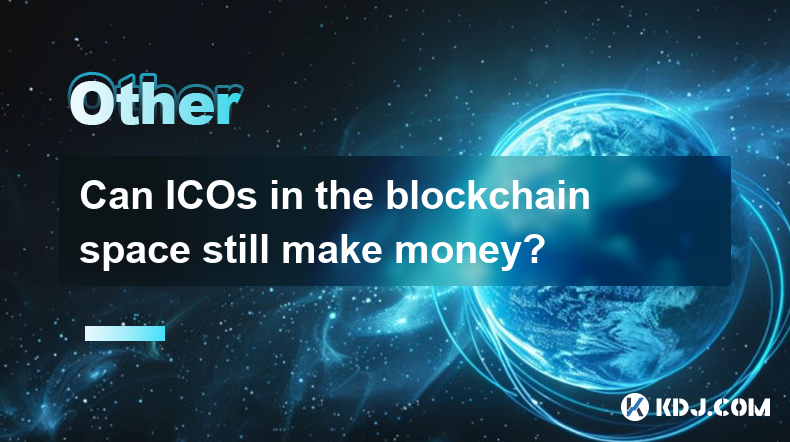
Can ICOs in the blockchain space still make money?
Apr 17,2025 at 08:29pm
The landscape of Initial Coin Offerings (ICOs) in the blockchain space has evolved significantly since their peak in 2017 and 2018. Despite the increased regulatory scrutiny and the rise of alternative fundraising methods like Security Token Offerings (STOs) and Initial Exchange Offerings (IEOs), ICOs can still be a viable way to raise funds and generat...

Can the application of blockchain in supply chain finance bring benefits?
Apr 15,2025 at 04:00pm
Can the application of blockchain in supply chain finance bring benefits? The integration of blockchain technology into supply chain finance has garnered significant attention in the cryptocurrency and financial sectors. This article explores how blockchain can potentially revolutionize supply chain finance, detailing its benefits and providing a compre...
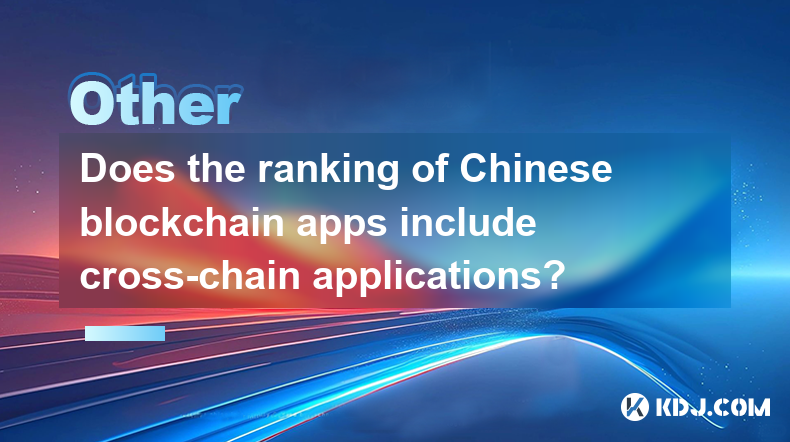
Does the ranking of Chinese blockchain apps include cross-chain applications?
Apr 14,2025 at 04:00pm
The ranking of Chinese blockchain apps is a comprehensive evaluation that takes into account various aspects such as user base, transaction volume, and technological innovation. A pertinent question arises regarding whether these rankings include cross-chain applications. Cross-chain applications, which allow different blockchain networks to interact an...
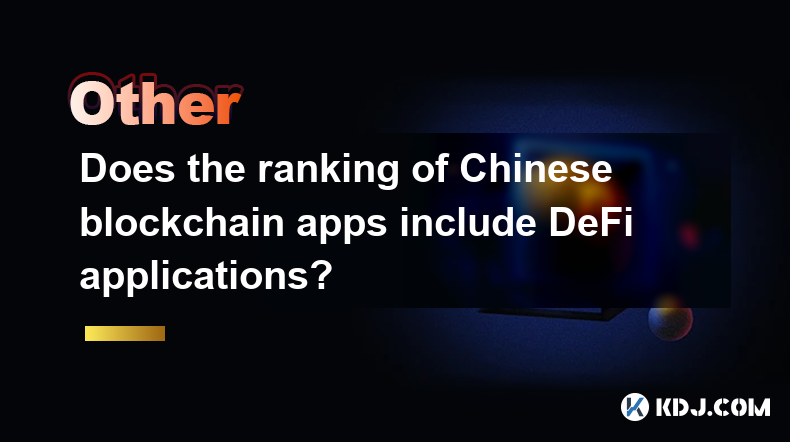
Does the ranking of Chinese blockchain apps include DeFi applications?
Apr 15,2025 at 06:57am
The ranking of Chinese blockchain apps is a comprehensive list that showcases the most popular and influential applications within the cryptocurrency ecosystem. One question that often arises is whether these rankings include DeFi applications. To answer this, we need to delve into the specifics of how these rankings are compiled and what types of appli...
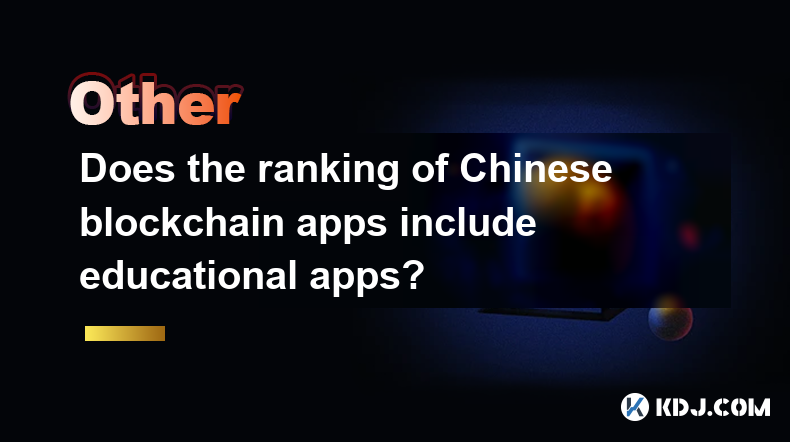
Does the ranking of Chinese blockchain apps include educational apps?
Apr 16,2025 at 03:35am
The ranking of Chinese blockchain apps often includes a variety of categories, from finance and gaming to social networking and beyond. One question that frequently arises is whether these rankings include educational apps. To address this, we need to delve into the specifics of how blockchain apps are categorized and ranked in China, and whether educat...
Does the ranking of Chinese blockchain apps include enterprise-level applications?
Apr 15,2025 at 06:42am
The ranking of Chinese blockchain apps often includes a variety of applications, ranging from consumer-focused to enterprise-level solutions. Understanding the scope and criteria for these rankings is essential to determine if enterprise-level applications are included. This article delves into the specifics of how Chinese blockchain app rankings are co...

Can ICOs in the blockchain space still make money?
Apr 17,2025 at 08:29pm
The landscape of Initial Coin Offerings (ICOs) in the blockchain space has evolved significantly since their peak in 2017 and 2018. Despite the increased regulatory scrutiny and the rise of alternative fundraising methods like Security Token Offerings (STOs) and Initial Exchange Offerings (IEOs), ICOs can still be a viable way to raise funds and generat...

Can the application of blockchain in supply chain finance bring benefits?
Apr 15,2025 at 04:00pm
Can the application of blockchain in supply chain finance bring benefits? The integration of blockchain technology into supply chain finance has garnered significant attention in the cryptocurrency and financial sectors. This article explores how blockchain can potentially revolutionize supply chain finance, detailing its benefits and providing a compre...

Does the ranking of Chinese blockchain apps include cross-chain applications?
Apr 14,2025 at 04:00pm
The ranking of Chinese blockchain apps is a comprehensive evaluation that takes into account various aspects such as user base, transaction volume, and technological innovation. A pertinent question arises regarding whether these rankings include cross-chain applications. Cross-chain applications, which allow different blockchain networks to interact an...

Does the ranking of Chinese blockchain apps include DeFi applications?
Apr 15,2025 at 06:57am
The ranking of Chinese blockchain apps is a comprehensive list that showcases the most popular and influential applications within the cryptocurrency ecosystem. One question that often arises is whether these rankings include DeFi applications. To answer this, we need to delve into the specifics of how these rankings are compiled and what types of appli...

Does the ranking of Chinese blockchain apps include educational apps?
Apr 16,2025 at 03:35am
The ranking of Chinese blockchain apps often includes a variety of categories, from finance and gaming to social networking and beyond. One question that frequently arises is whether these rankings include educational apps. To address this, we need to delve into the specifics of how blockchain apps are categorized and ranked in China, and whether educat...

Does the ranking of Chinese blockchain apps include enterprise-level applications?
Apr 15,2025 at 06:42am
The ranking of Chinese blockchain apps often includes a variety of applications, ranging from consumer-focused to enterprise-level solutions. Understanding the scope and criteria for these rankings is essential to determine if enterprise-level applications are included. This article delves into the specifics of how Chinese blockchain app rankings are co...
See all articles























































































